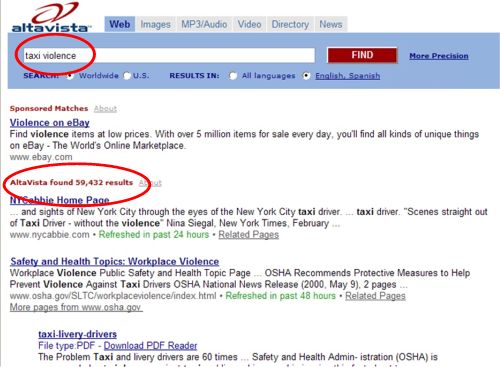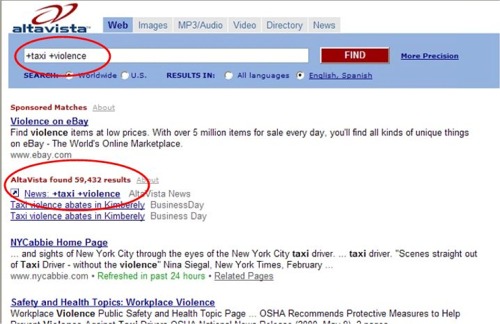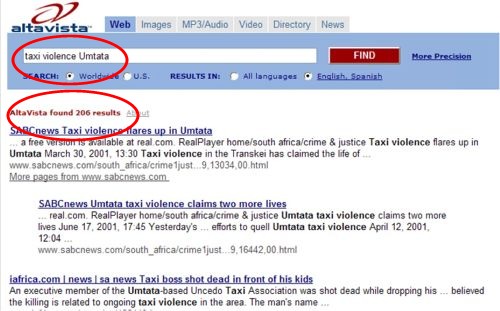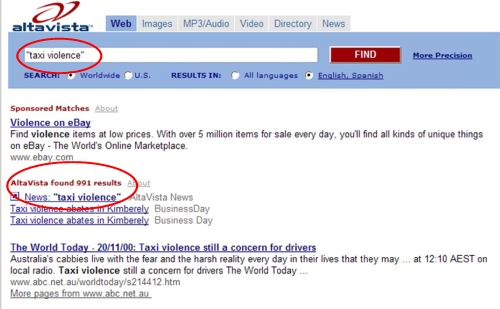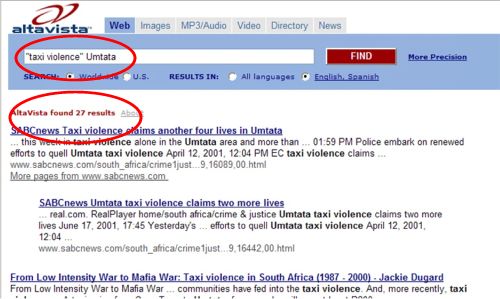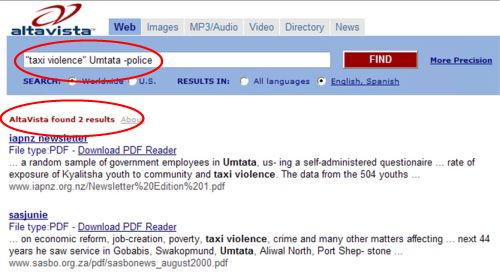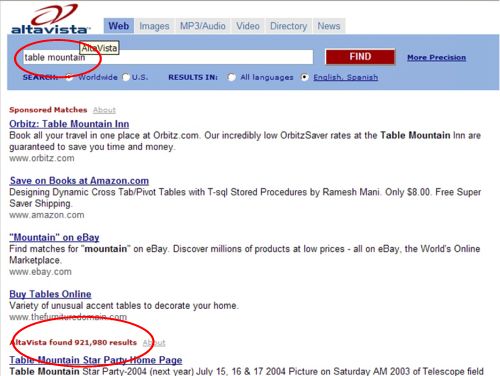| Searching for keywords - establishing rules | ||||||||||||||||||||||||
|
This is an optional activity. You can check the answers by clicking
on the link at the bottom of the page, and discussing them with colleagues
at your school.
When searching with keywords, you need to use a very specific way of writing these keywords (it is called "syntax"). This exercise will help you to understand a set of simple rules that you can apply when using a keyword search engine. Using Google - a keyword search engine that does not need "syntax" skills (you just type in the keywords and nothing else) In Alta Vista (http://www.altavista.com)
Search engine language rules Copy this table to your word processor. Complete the right hand column by referring to the screens below the table.
When you type in taxi violence you get the following results (circled):
Write 59 432 in the column next to taxi violence in the table When you type in +taxi +violence you get the following results (circled below). Note that there is not difference; in other words the + signs are not necessary.
When you type in taxi violence Umtata you get the following results (circled below):
When you type in "taxi violence" you get the following results (circled below):
When you type in "taxi violence" Umtata you get the following results (circled below):
When you type in "taxi violence" Umtata -police you get the following results (circled below):
When you type in table mountain you get the following results (circled below):
Answer the following questions using the numbering provided:
Click here to see some suggested responses to the questions If you want to explore this online, first look at the basic summary of keyword tips provided on this CD. The website for Alta Vista
is http://www.altavista.com
|
